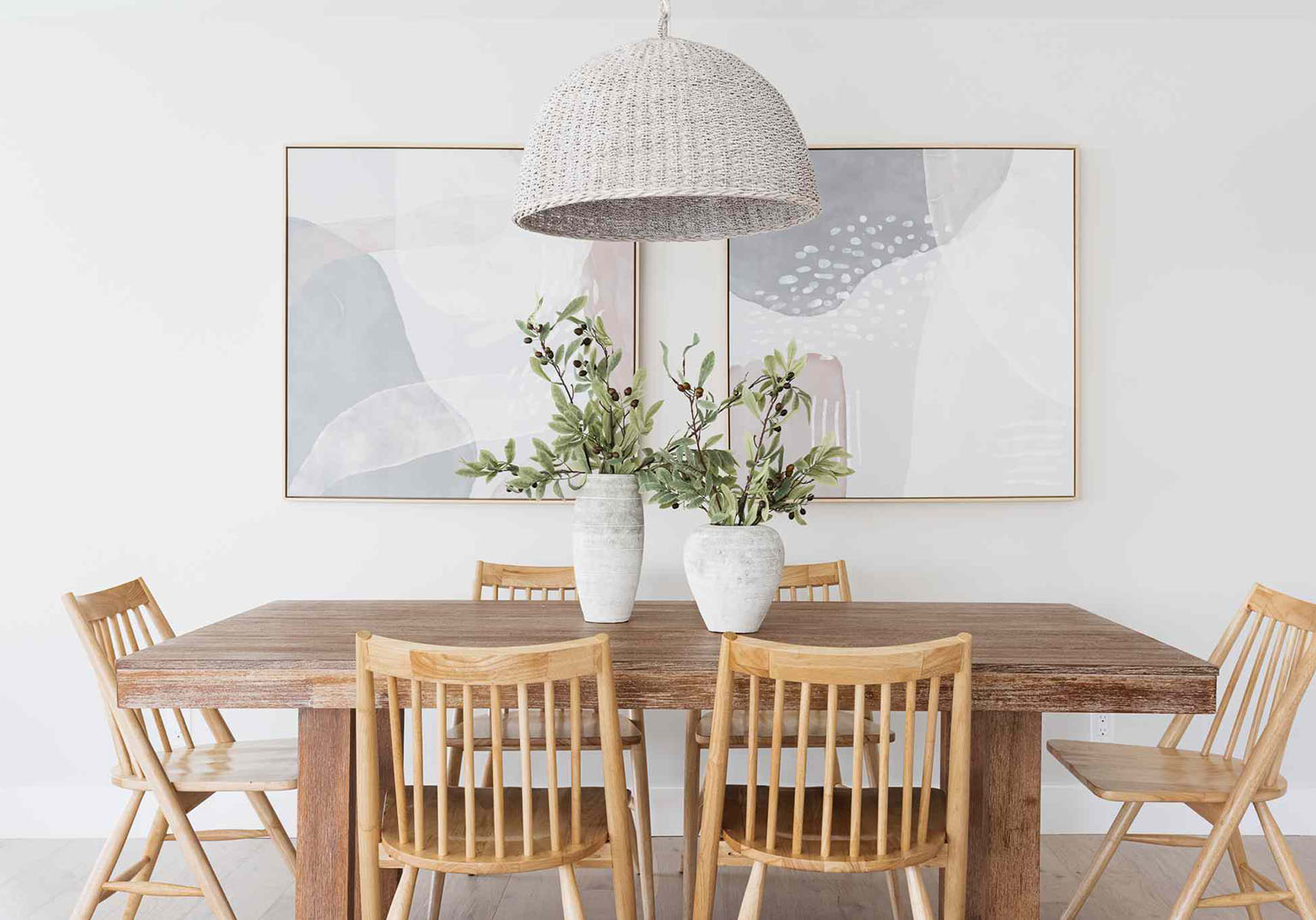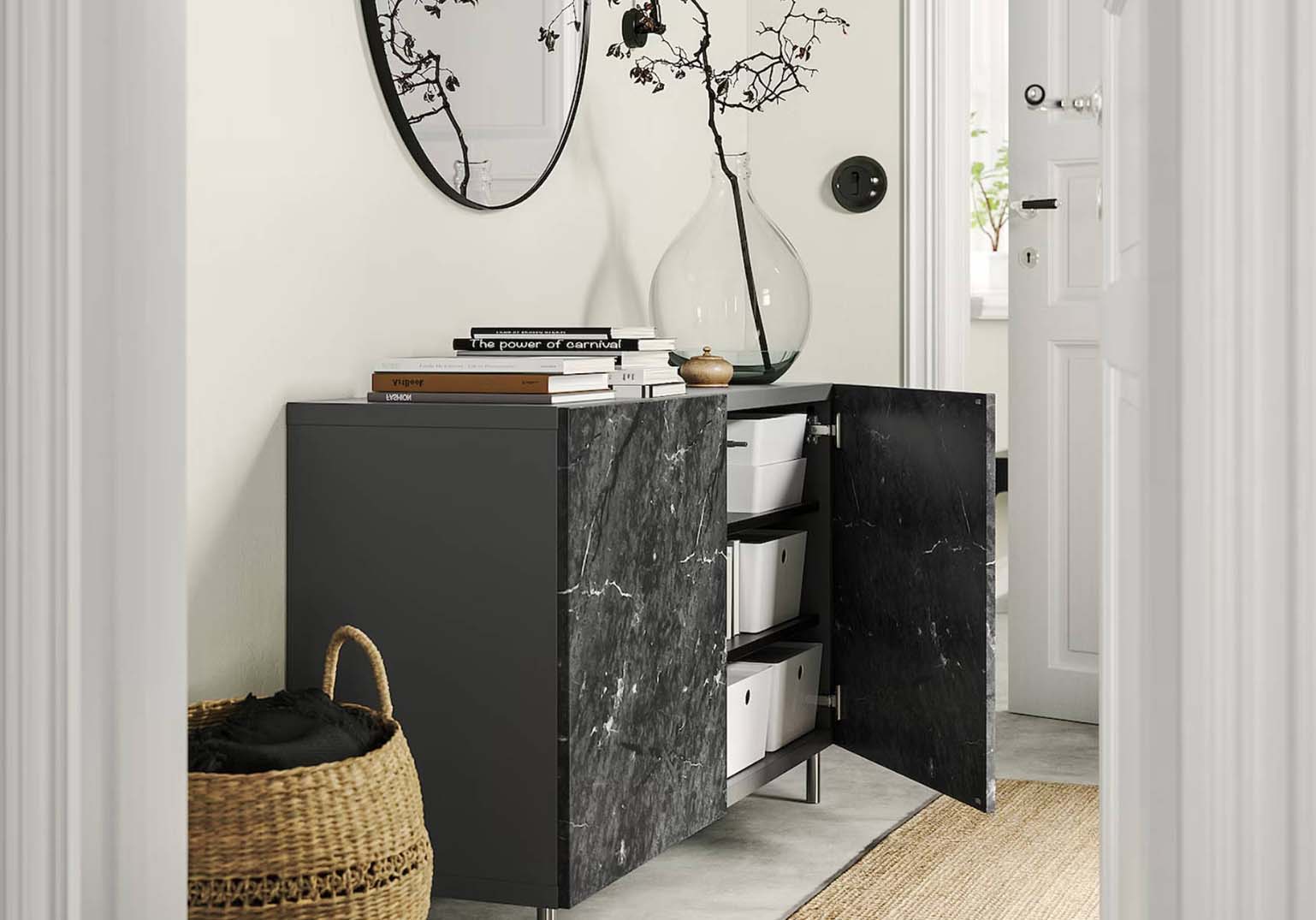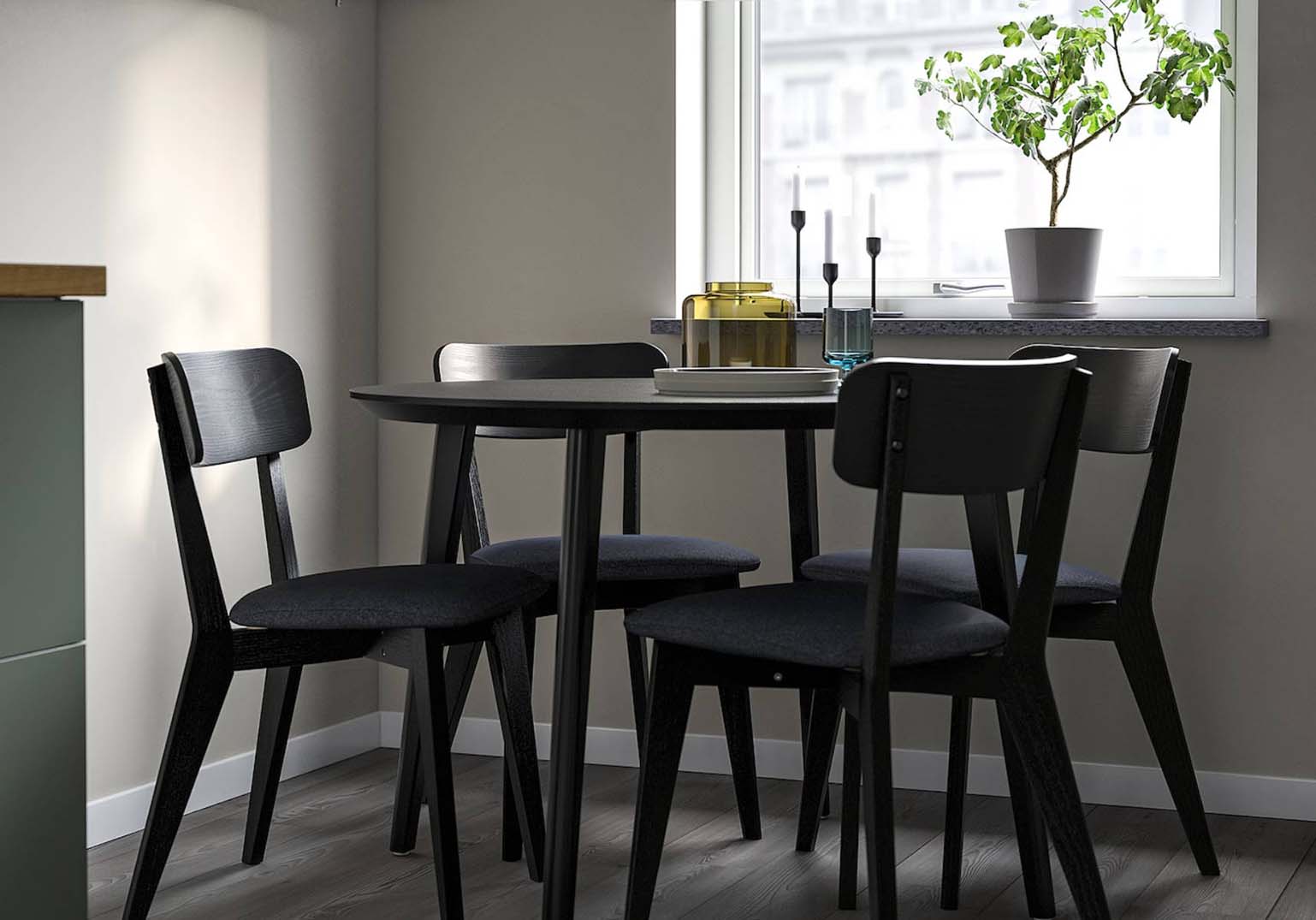Lighting plays a crucial role in setting the atmosphere of any room, but in the dining room, it is particularly important. The right lighting can transform a simple meal into an elegant dining experience, create a cozy ambiance for family dinners, or make a space feel more inviting for guests. Whether you’re looking to enhance the warmth of your dining area or create a statement with bold lighting choices, understanding the various options and how to use them effectively is key.
1. The Centerpiece: Chandeliers
When it comes to dining room lighting, chandeliers are often the focal point. These lighting fixtures not only provide light but also serve as a statement piece, adding character and elegance to the room.
Choosing the Right Chandelier:
- Size Matters: The size of your chandelier should be proportionate to the size of your dining table and room. A general rule of thumb is that the chandelier should be about one-third the width of the dining table. For example, if your table is 72 inches long, your chandelier should be approximately 24 inches wide.
- Height Considerations: Hang the chandelier so that its lowest point is about 30 to 36 inches above the dining table. This height allows for an unobstructed view across the table while providing ample light.
- Style Matching: The style of your chandelier should complement the decor of your dining room. For a traditional look, opt for a crystal chandelier. If your style is more modern, consider a minimalist design with clean lines and metallic finishes.
Popular Chandelier Styles:
- Crystal Chandeliers: These are perfect for adding a touch of luxury and sparkle. They reflect light beautifully, creating a glamorous atmosphere.
- Drum Chandeliers: Featuring a fabric or metal drum around the lights, these chandeliers provide a more diffused, soft light. They work well in contemporary and transitional spaces.
- Candle Chandeliers: Resembling traditional candle holders, these chandeliers bring a rustic, old-world charm, ideal for farmhouse-style dining rooms.
2. Pendant Lighting: Versatile and Stylish
Pendant lights are another popular choice for dining rooms, offering a more modern and versatile alternative to chandeliers. These fixtures hang from the ceiling by a cord, chain, or metal rod, and come in a variety of styles, shapes, and sizes.
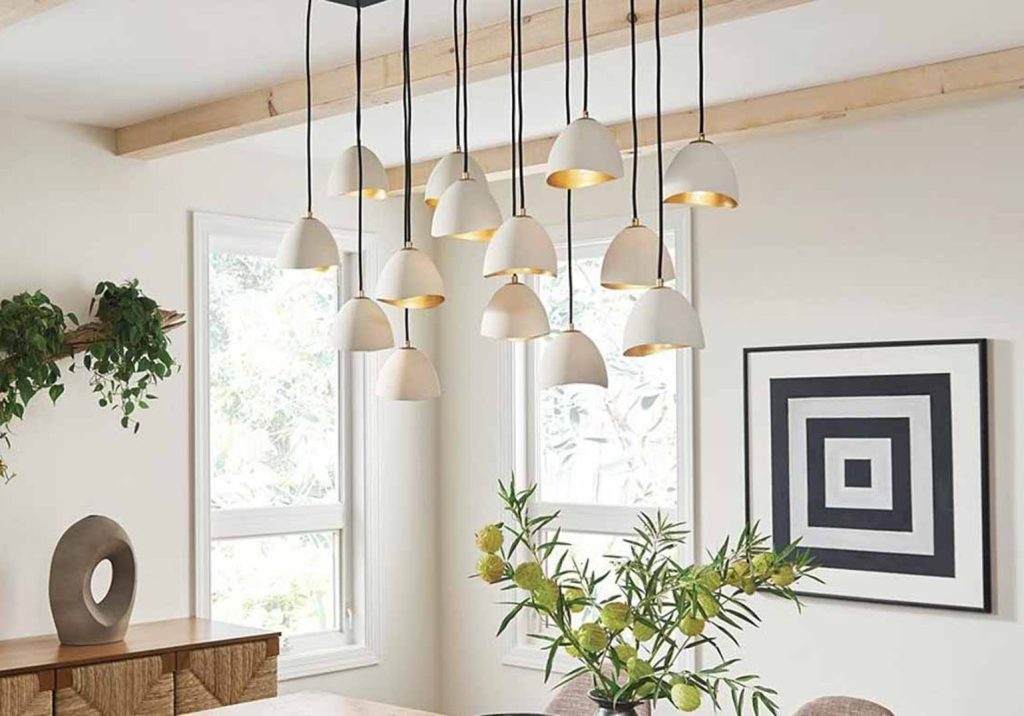
Advantages of Pendant Lights:
- Focused Lighting: Pendants are great for directing light onto specific areas, such as the dining table. This makes them ideal for task lighting when dining or working at the table.
- Customizable Configurations: You can hang a single large pendant over the table or arrange multiple smaller pendants in a linear or staggered formation. This flexibility allows you to create a look that suits your space and needs.
Design Tips:
- Grouping: For a dramatic effect, consider hanging a group of pendants at varying heights. This adds visual interest and dimension to the room.
- Materials and Finishes: Choose materials that reflect your dining room’s style. Glass pendants offer a sleek, modern look, while metal or wood pendants add warmth and texture.
- Dimmable Options: Installing dimmable pendants gives you control over the intensity of light, allowing you to adjust the mood for different occasions.
3. Recessed Lighting: Subtle and Functional
Recessed lighting, also known as can lights or downlights, is installed in the ceiling, providing a sleek and unobtrusive lighting option. While recessed lights are often used for general illumination, they can also be strategically placed to highlight specific areas of the dining room.
Benefits of Recessed Lighting:
- Clean Look: Because the fixtures are embedded in the ceiling, recessed lights do not intrude into the space, making them ideal for rooms with low ceilings.
- Even Illumination: When spaced correctly, recessed lights provide even, overall lighting, reducing shadows and brightening the entire room.
- Highlighting: Recessed lights can be positioned to highlight artwork, architectural features, or the dining table itself.
Installation Tips:
- Spacing: A good rule is to space recessed lights about 4 to 6 feet apart to ensure even lighting. For more focused lighting, such as over the dining table, consider placing the lights closer together.
- Layering: Combine recessed lighting with other types of fixtures, such as chandeliers or wall sconces, to create layers of light that add depth and atmosphere.
4. Wall Sconces: Adding Ambiance and Accents
Wall sconces are a wonderful way to add ambient lighting and accentuate the walls in your dining room. These fixtures attach directly to the wall and can be used to frame artwork, mirrors, or simply add a decorative element to the room.
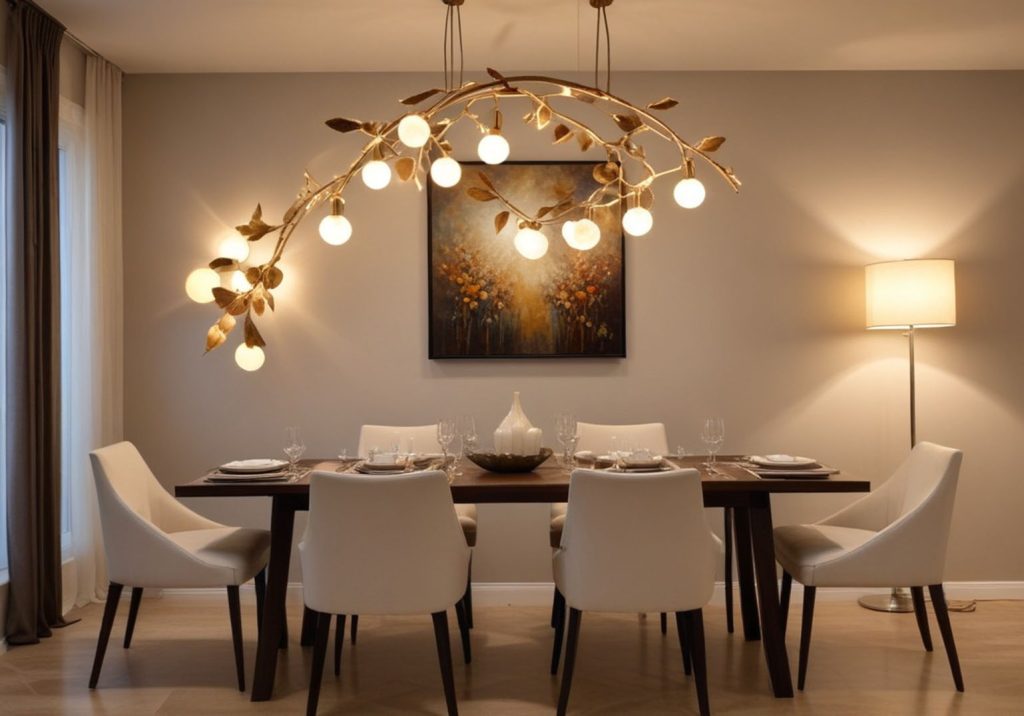
Types of Wall Sconces:
- Upward-Facing Sconces: These direct light upward, creating a soft, ambient glow that spreads across the wall and ceiling. This type of sconce is ideal for creating a warm, inviting atmosphere.
- Downward-Facing Sconces: These direct light downward, which can help create a cozy, intimate setting around the dining table. They are also great for task lighting when placed near a sideboard or buffet.
- Adjustable Sconces: Some wall sconces come with adjustable arms, allowing you to direct light where it’s needed most. These are particularly useful in multi-purpose dining rooms that may also serve as work or reading areas.
Placement and Design:
- Height: Install wall sconces at about 60 to 66 inches from the floor for optimal lighting. This height ensures that the light is at eye level, reducing glare and providing comfortable illumination.
- Pairing: For a balanced look, consider placing sconces on either side of a focal point, such as a mirror, window, or piece of art. This symmetry adds a sense of structure and elegance to the room.
5. Accent Lighting: Adding Drama and Interest
Accent lighting is all about highlighting specific features or creating a focal point within your dining room. This type of lighting can be achieved through various fixtures, including LED strip lights, under-cabinet lights, or even carefully placed table lamps.
Creative Uses of Accent Lighting:
- Cove Lighting: Install LED strip lights in coves, crown molding, or behind a false ceiling to cast a soft, indirect light that creates a floating effect. This adds drama and a modern touch to the dining room.
- Under-Cabinet Lighting: If your dining room includes a built-in cabinet or sideboard, under-cabinet lighting can showcase your dinnerware, glassware, or decorative items. It also provides a soft glow that enhances the room’s ambiance.
- Picture Lights: If you have artwork in your dining room, picture lights can be mounted above or beside the frame to highlight the piece and draw attention to it.
6. Layering Light: The Key to a Dynamic Dining Room
One of the most effective ways to create a dynamic and versatile dining room is by layering different types of lighting. This involves combining ambient, task, and accent lighting to achieve a well-lit space that can be adjusted to suit different moods and occasions.
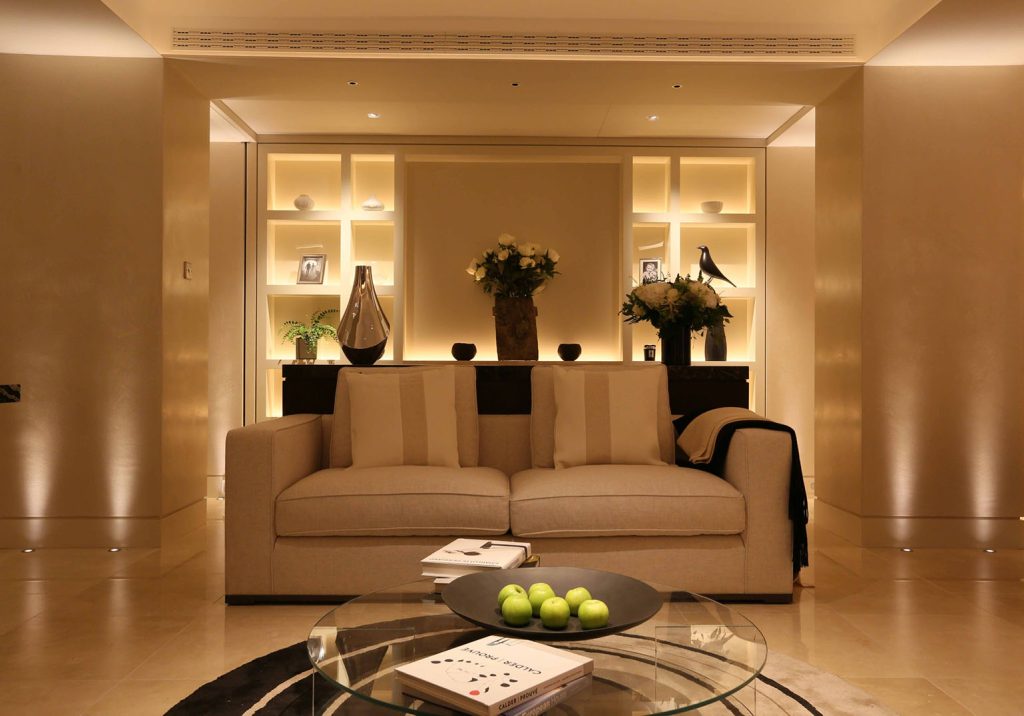
Steps to Layering Light:
- Start with Ambient Lighting: This is your room’s primary light source, which could be a chandelier, pendant lights, or recessed lighting. Ambient lighting provides overall illumination and sets the general tone of the room.
- Add Task Lighting: Focused lighting is essential for activities like dining, reading, or working. Pendant lights or a linear chandelier directly over the dining table can serve this purpose.
- Incorporate Accent Lighting: Use accent lighting to highlight specific areas or features within the room. Wall sconces, cove lighting, and under-cabinet lights can all serve as accent lighting.
- Consider Dimmers: Installing dimmer switches allows you to adjust the brightness of each layer of light, giving you control over the room’s ambiance. You can brighten the room for a lively dinner party or dim the lights for a more intimate gathering.
7. Lighting for Different Dining Room Styles
Different dining room styles call for different lighting choices. Here’s how to match your lighting to your decor:
Traditional Dining Rooms:
- Opt for ornate chandeliers, perhaps with crystal details.
- Incorporate candle-style sconces for an old-world charm.
- Use warm, soft lighting to enhance the classic feel.
Modern Dining Rooms:
- Choose minimalist pendant lights with clean lines and metallic finishes.
- Consider recessed lighting for a sleek, unobtrusive look.
- Add LED accent lighting for a contemporary touch.
Rustic or Farmhouse Dining Rooms:
- Go for wooden or wrought-iron chandeliers.
- Use lantern-style pendants or sconces to enhance the rustic vibe.
- Warm, amber-toned bulbs can enhance the cozy atmosphere.
Industrial Dining Rooms:
- Exposed bulbs, metal finishes, and utilitarian design define industrial lighting.
- Consider track lighting or factory-style pendants.
- Edison bulbs can add an authentic industrial look.
8. Energy Efficiency and Bulb Choices
When selecting lighting for your dining room, it’s also important to consider energy efficiency and the type of bulbs you use.
LED Bulbs:
- LED bulbs are energy-efficient and have a long lifespan. They come in a variety of color temperatures, making them versatile for any dining room style.
- Dimmable LED bulbs are a great choice for chandeliers and pendant lights, allowing you to adjust the light to suit the occasion.
Halogen Bulbs:
- These provide bright, clear light and are often used in recessed lighting. However, they generate more heat and are less energy-efficient than LEDs.
Incandescent Bulbs:
- Incandescent bulbs offer a warm, cozy glow, which is perfect for creating an inviting dining room atmosphere. However, they are not as energy-efficient and have a shorter lifespan compared to LEDs.
Color Temperature:
- The color temperature of your bulbs can greatly influence the mood of your dining room. A warmer temperature (around 2700K to 3000K) creates a cozy, intimate atmosphere, while cooler temperatures (above 4000K) are better for a bright, modern look.
Customizing Your Dining Room Lighting
Lighting is an essential element in creating the perfect dining room ambiance. By carefully selecting and layering different types of lighting, you can design a space that is both functional and beautiful. Whether you’re hosting a formal dinner, enjoying a family meal, or simply relaxing with a book, the right lighting can make all the difference.
Take the time to consider how each element—chandeliers, pendant lights, recessed lighting, wall sconces, and accent lights—can work together to enhance your dining experience. Remember to incorporate dimmers and energy-efficient bulbs to maximize versatility and efficiency.
